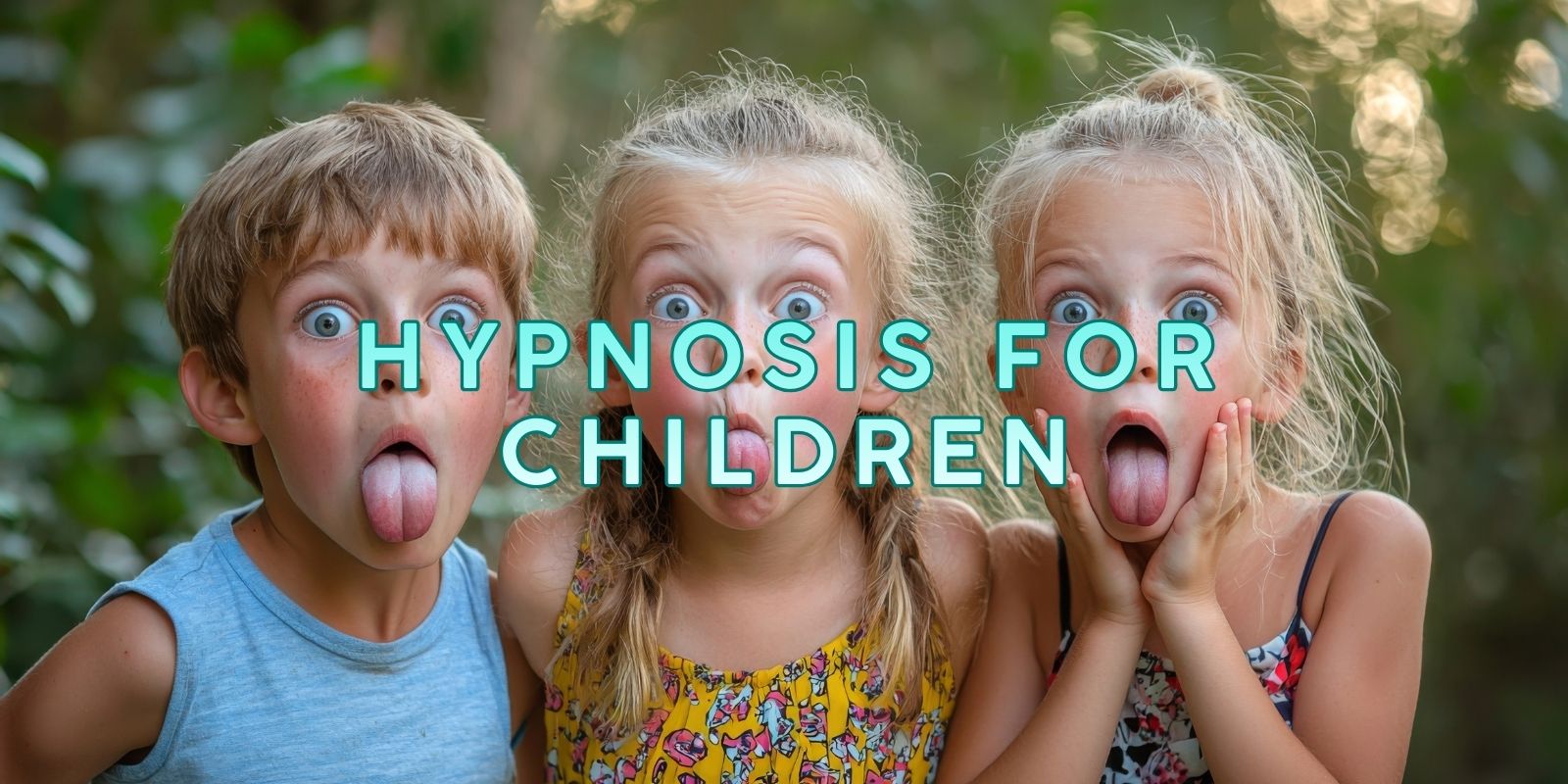Hypnosis For Children: Gentle Support for Growing Minds
Hypnosis for children is becoming increasingly recognized as a gentle, effective, and evidence-informed way to support their emotional, mental, and physical wellbeing. Although parts of the medical community once overlooked the therapeutic benefits of hypnosis, it is now emerging as a trusted complementary approach in pediatrics. When delivered by a trained practitioner, hypnosis gives children simple, practical tools they can use throughout life.
Research exploring hypnosis for children continues to show promising results across a wide range of concerns—from anxiety and sleep difficulties to pain, self-confidence, and behavior challenges. Unlike adults, children naturally enter imaginative, playful states, making them especially responsive to stories, imagery, and gentle suggestions. Through these methods, they learn how to feel calmer, safer, and more capable in their daily experiences.
This guide explores the benefits of child-centered hypnosis, the techniques therapists use, and how to determine whether this approach is right for your family. You’ll also find useful links and answers to common questions, helping you feel supported and informed before taking the next step.
Table of Contents – Hypnosis For Children
- What Is Hypnosis for Children?
- Reduced Anxiety
- Increased Motivation to Try New Things
- Improved Self-Confidence and Self-Esteem
- Better Focus and Concentration
- Reduced Stress and Emotional Overload
- Greater Ability to Handle Changes in Life
- Improved Health and Overall Wellbeing
- Hypnosis Techniques Used With Children
- Key Takeaways
- FAQ
- Nurturing Resilience Through Child-Friendly Hypnosis

What Is Hypnosis for Children?
Hypnosis for children uses focused attention, relaxation, and imagination to help kids manage emotional challenges and develop healthier coping skills. It does not control a child’s mind or behavior. Instead, it gently guides them into a calm, daydream-like state where helpful ideas feel easier to understand and apply.
Modern pediatric hypnosis is widely used in hospitals and clinical settings to support children with anxiety, pain, and procedural fear. Resources such as dedicated pediatric hypnosis programs show that children respond especially well when sessions are playful, safe, and attuned to their developmental stage. Parents are often part of the process, helping the child feel supported and reassured.
While hypnosis was once underused in pediatrics, it is now recognized as a highly effective tool for emotional and behavioral support. Articles exploring paediatric hypnosis highlight its safety, adaptability, and value as a complement to psychological and medical care.
Families wanting a deeper understanding can also explore a broader overview on hypnosis for children and its benefits, which explains how these methods work in real sessions and what families can expect.
Reduced Anxiety – Hypnosis For Children
Anxiety is one of the most common reasons families seek hypnotherapy for children. Whether the worries relate to school, friendships, health, or family changes, hypnosis offers kids a safe space to slow down and reconnect with calm. Through stories, gentle metaphors, and soothing relaxation, children learn skills they can use anytime anxiety rises.
Specialists who offer hypnotherapy for anxiety and stress often provide simple tools children can remember even when they’re overwhelmed. These strategies help kids self-soothe, feel safer in their bodies, and regain a sense of control.
Many families also work with child psychologists to address deeper emotional patterns. Hypnosis complements this beautifully by creating a more settled nervous system, making therapy easier to engage with.
For some children, hypnosis may reduce reliance on medication—but this should always be discussed with the treating doctor. The goal is to empower children, not push them, helping anxiety hold less influence over daily life.
Increased Motivation to Try New Things
Many children hesitate when facing new or unfamiliar experiences. Whether joining a team, starting school, or trying a creative activity, fear can overshadow curiosity. Hypnosis helps shift these inner blocks by building confidence and strengthening a child’s sense of capability.
Through imagery and positive suggestions, children can rehearse stepping into new situations calmly and successfully. This mental practice is especially useful for sports and performance. The approach described in enhancing sporting performance through hypnotherapy shows how imagination can unlock motivation and reduce performance anxiety.
Hypnosis also reframes the concept of “the unknown.” Instead of seeing new things as scary, children begin to view them as opportunities. A child who once avoided new activities may begin approaching them with a sense of pride and curiosity.
As children try new things, confidence naturally grows. This often becomes a positive ripple effect, encouraging them to explore even more areas of life with courage and enthusiasm.
Improved Self-Confidence and Self-Esteem
Low self-confidence can quietly hold children back in school, friendships, and personal growth. Hypnosis strengthens self-worth by gently guiding children toward more compassionate, empowering ways of seeing themselves.
Therapists weave in ideas rooted in healthy self-esteem, using stories, metaphors, and characters that children naturally relate to. These child-friendly suggestions help them internalize the belief that they are capable and deserving of kindness.
Children also develop a healthier self-image, shifting focus away from flaws and toward strengths and small achievements. This builds resilience and reduces the harsh self-criticism that many children quietly carry.
For introverts, this often means feeling safe enough to express themselves. For extroverts, it may mean becoming less dependent on external approval. Both outcomes contribute to a stronger, gentler sense of self-worth.
Better Focus and Concentration
With constant digital distractions, many children struggle to maintain focus. Hypnosis teaches attention as a skill, helping children recognize and strengthen their ability to stay present without pressure or frustration.
Sessions often include imaginative stories that highlight completion, follow-through, and the satisfaction of finishing tasks. These inner rehearsals can help children stay engaged with schoolwork or daily routines in a calmer, more organized way.
Parents may notice improvements such as better homework habits, increased confidence in learning, and fewer arguments about tasks. Teachers may comment that the child seems more attentive or grounded in class.
Reduced Stress and Emotional Overload
Children often express stress through physical symptoms—tummy aches, irritability, tears, or withdrawal—long before they can name their feelings. Hypnosis helps release this emotional build-up through deep relaxation and soothing imagery.
A professional hypnotherapist typically guides children through calming breathing, gentle visualization, and progressive relaxation. As muscles soften and breathing steadies, the nervous system resets, allowing the child to feel safe again.
Parents often report that their home environment becomes calmer as their child learns better emotion-regulation skills. Hypnosis supports the whole family by teaching simple, transferable tools for everyday moments.
This approach is especially valuable for children navigating ongoing pressures such as academic expectations, health issues, or family transitions. Hypnosis becomes a peaceful space where they can rest, reset, and regain balance.
Greater Ability to Handle Changes in Life
Life brings many changes—new schools, new routines, friendship shifts—and some children struggle with transitions. Hypnosis helps the subconscious become more flexible and less reactive, making change feel more manageable.
Through imaginative stories and guided imagery, children practice entering new situations calmly and confidently. These inner rehearsals help reduce fear and build trust in their ability to adapt.
Articles discussing paediatric hypnosis highlight how this approach helps children accept change with less resistance. Instead of clinging to old routines out of fear, they begin to step into new experiences with curiosity and courage. With each successful change, children grow more confident in their ability to cope, ask for help, and stay resilient in the face of uncertainty.
Improved Health and Overall Wellbeing
Hypnosis also supports children’s broader wellbeing. It is commonly used to assist with sleep issues, mild pain, medical procedure anxiety, and habits such as bedwetting or nail biting. When children feel calmer and more in control, their bodies often respond with better rest, digestion, and energy.
For sleep challenges or fear of the dark, therapists may use imagery such as a protective light or a comforting character nearby. These inner tools help children feel safe even when alone or away from home.
Hypnosis can also support healthy lifestyle habits. Programs dedicated to hypnotherapy for weight-related behaviours demonstrate how subconscious guidance can shape long-term wellbeing. When children learn these skills early, they carry them into adolescence and adulthood, giving them lifelong tools for emotional and physical health.
Hypnosis Techniques Used With Children
Storytelling and Metaphors Storytelling: is central to child-friendly hypnosis. Therapists create metaphors that reflect the child’s experiences, using characters and adventures to teach emotional strength, resilience, or calmness. Children absorb these lessons naturally since they feel like play rather than therapy.
Visualization and Guided Imagery: Children are guided to imagine calming scenes or successful outcomes. This helps them feel more confident and emotionally prepared for real-life challenges. Guided imagery is especially effective for school stress, sports, and social situations.
Progressive Muscle Relaxation” Therapists often describe relaxation like squeezing and releasing a lemon or letting go of a balloon. These playful versions of relaxation help children notice tension and learn how to release it, improving their emotional and physical comfort.
Breathing Exercises: Children learn simple breathing patterns that calm their bodies and settle their thoughts. These techniques are portable and can be used anytime—before sleep, at school, or during moments of overwhelm.
Positive Affirmations and Suggestions
During hypnosis, the child’s mind absorbs positive suggestions more easily. Affirmations about bravery, kindness, capability, and safety are delivered through stories or images that feel meaningful to the child.
Some practitioners offer structured support like Kids Place Programs, ensuring children receive developmentally appropriate care tailored to their needs. Certain therapists also incorporate broader philosophies that emphasize balance and acceptance, similar to ideas explored in understanding the Tao. While not hypnosis, these perspectives can complement therapy by modelling a calm relationship with thoughts and emotions.
Key Takeaways – Hypnosis For Children
- Hypnosis for children is a safe and gentle approach that uses imagination, relaxation, and positive suggestion.
- It helps with anxiety, confidence, focus, sleep issues, and managing changes or challenges.
- Child-friendly techniques make sessions enjoyable, engaging, and easy to apply in daily life.
- A trained practitioner adapts the process to your child’s age, personality, and specific needs.
- With consistency, hypnosis builds lifelong emotional tools for calm, resilience, and self-belief.
FAQ – Hypnosis For Children
Is hypnotherapy safe for children?
Yes. When delivered by a trained professional, hypnosis is gentle, respectful, and tailored to your child’s developmental level. Children remain aware and in control at all times.
What kinds of problems can hypnotherapy help children with?
Hypnosis supports anxiety, phobias, sleep difficulties, focus challenges, low confidence, exam stress, and behavior habits like nail biting. It helps children create healthier emotional responses.
Will my child be aware during hypnosis?
Children stay conscious, relaxed, and fully aware. They can speak, stop, or ask questions anytime. Most describe the experience as calming and enjoyable.
How do therapists make hypnosis child-friendly?
Therapists use stories, characters, games, metaphors, and simple language that match the child’s age and interests. Sessions feel playful, safe, and engaging.
How many sessions will my child need?
Some children improve after a few sessions, while others benefit from longer support. The therapist will recommend a plan that adapts to your child’s progress and goals.
Nurturing Resilience Through Child-Friendly Hypnosis
Hypnosis for children is not about perfection or quick fixes—it’s about nurturing the inner resources they need to face life with courage and calm. By working with their natural imagination, hypnosis turns emotional learning into something playful, supportive, and deeply empowering.
Whether your child is dealing with anxiety, low confidence, stress, or major transitions, this approach offers a safe and gentle path to growth. Combined with supportive parenting and, when needed, psychological care, hypnosis becomes a meaningful tool on your child’s wellbeing journey.
If this approach resonates with your family, connecting with a qualified hypnotherapist can be the next step toward fostering emotional resilience and inner strength in your child.
